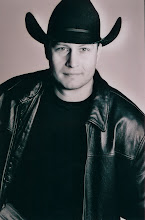
I often have people tell me; “My horse spooked, and when he took off it seemed like the harder I pulled on the reins the faster he ran.” Another common statement is; “When I want my horse to stop I pull and pull on the reins, but she just keeps going!”
Let’s put things into a little perspective.
First, think about how much you weigh. Now consider that the average horse weighs somewhere around 1000 pounds, give or take a couple of hundred pounds. Considering this, is it really feasible that you can stop him by pulling on him? In reality there is nobody who has the strength to pull hard enough to cause sufficient pain to make the horse stop.
Second, one of the main driving forces of a horse is his survival instinct. This instinct is so strong; when a horse is spooked his brain becomes obsessed and focused on saving himself from what he perceives as danger. Because of this driving force, when a horse is spooked the pain from pulling on his mouth can actually be converted into adrenaline. Pain becomes nonexistent; fear for his life overrides the pain. Subsequently, the harder you pull the faster the horse may run.
With the preceding thoughts in mind, we need to understand that the reins do not make the horse stop, they are used as a ‘cue’ that signals the horse to stop. Therefore, if you have not trained your horse to stop with that cue, pulling on the reins means nothing more to him than if you had asked his favorite color.
We will not cover all of the ways to teach a horse to stop, just some of the basics.
Personally I like to teach the verbal command ‘Whoa’, and I teach this at various energy levels so that my horse knows that any time he hears ‘whoa’ he is to stop. I do this so that if we are just casually walking I can merely give a quiet “whoa” and he will stop, or if we are running or at any other level of speed, and I want him to stop I can give a louder cue, and he will respond the same.
When I first start training a horse to stop at the word ‘Whoa’, I do it from the ground. While I do introduce ‘Whoa’ to the horse during the initial round pen work, the real work comes during the leading. While I am leading the horse around, I will say “Whoa” and then stop. Initially the horse will want to take one or two steps after you stop. While a little run through is to be expected, if you are consistent, your horse should learn pretty quickly that ‘Whoa’ means stop. Once he figures that out he will stop at the word cue before you actually stop.
Once you have your horse trained to stop at a walk, then you progress on to a jog and then a run. Remember to do all of this training from the ground before you ever get on his back. However, once you have your horse trained to the cues from the ground then you mount up, and train the cues using the word, then as a cue enforcer use the bit. Remember to always train your horse at a walk, and then increase the momentum a notch. Your horse should know and practice each cue fluently at each level of speed before you move up to the next level.
One last thing to remember is that you need to train both sides of your horse’s brain. That means when you are doing the ground work, you MUST train from both sides of the horse.
And one more last thing, and this is one of the most important things, ‘Whoa’ means stop. It doesn’t mean slow down. It doesn’t mean halt for a second. It means stop, don’t move, stand perfectly still. Don’t ever use ‘Whoa’ to mean anything else, pick another cue for slow. Personally I like to use the word ‘Easy’. With that cue I can get my horses to slow down in degrees, almost like down shifting in a car.
Next time we will discuss the much talked about “One Rein Stop”.
Goodbye until next time. Enjoy your horse, and Safe and Happy training.







